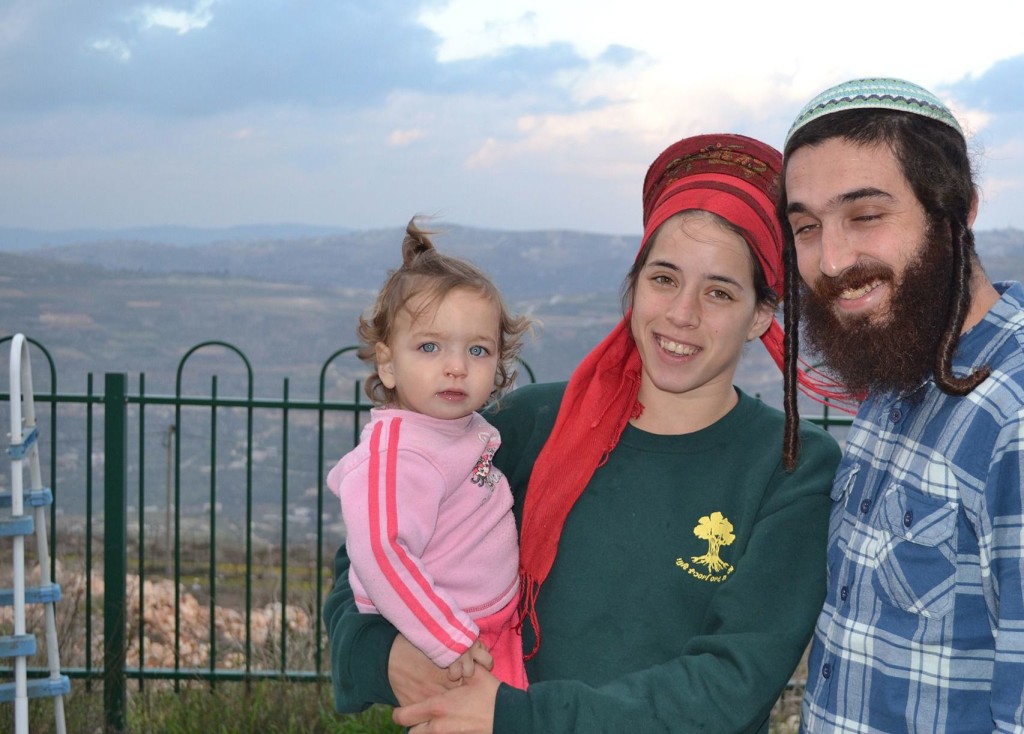The Radical New Face of the Jewish Settler Movement
PALESTINE - ISRAEL, 25 Jan 2016
Naomi Zeveloff, Forward – TRANSCEND Media Service
11 Jan 2016 – When Eliezer Shekhtman moved to Israel from Chicago, he chose to live in Tapuach, a hardcore settlement deep inside the Israeli-occupied West Bank. He had family friends there; his father had been an associate of Meir Kahane, the virulently anti-Arab rabbi.
But after a year, Shekhtman wanted more privacy and moved to a trailer on a hill outside the settlement. Though Israel considers such trailer outposts illegal, Shekhtman’s was hooked up to running water and electricity through Tapuach. The newcomer befriended other boys in the area, including some living even more austerely in tents on nearby hillsides. He spent the Sabbath with these boys and gave them rides in his car, once helping them move a tent.
Shekhtman’s friends were part of the so-called hilltop youth, a loosely affiliated group of Jewish settlers in their teens and 20s who live away from their parents on the hilltops surrounding established settlements. Members of the group have perpetrated so-called “price tag” attacks, using firebombs and spray paint to damage Palestinian property in retribution for Palestinian violence, or as a way of lashing out against the Israeli military.
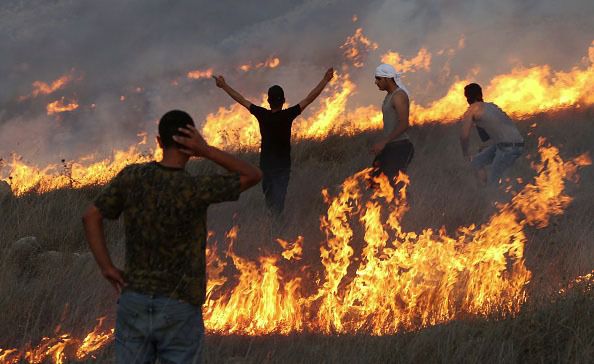
Their Livelihoods in Flames: Palestinian protesters stand amid blazes set by settlers to their olive groves last October near Yitzhar, a West Bank settlement known as a bastion for extremists. – Getty Images
With friends like these, it wasn’t long before a member of the Shin Bet, Israel’s security service, caught up with Shekhtman, a chubby-cheeked 23-year-old, as he was driving one evening in his car.
“You are hanging out with dangerous people,” Shekhtman recalled the security agent telling him. “I said, ‘Okay, thank you for the warning.’”
Now, Shekhtman’s friends are at the center of a national firestorm. Several hilltop youth members claim the Shin Bet tortured them as suspects in a murderous arson attack against a Palestinian family. The state has charged two of them. And protests against the alleged torture have spread across the country, including outside the home of Naftali Bennett, the settlers’ biggest advocate in the Knesset. Bennett justified the Shin Bet’s methods as necessary to prevent young men like them from striking again. Meanwhile, at Tapuach Junction, a militarized intersection leading to Shekhtman’s old settlement, posters plastered on bus stops and concrete blocks declare: “Jews don’t torture other Jews. Stop the inquisition.”
The hilltop youth have always had power, which they wielded through violent acts, often under the cover of night. But for most Israelis, these were distant events perpetrated by extremists in the West Bank, a kind of Wild West they rarely think about or visit. Now, ironically, the efforts of Israel’s security services to suppress the hilltop youth have brought this cohort into the daylight — and given them a voice.
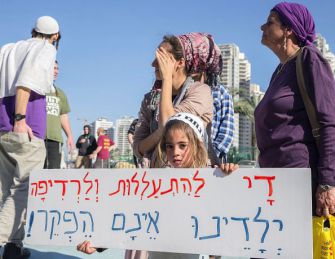
Gaining a Voice: Demonstrators at a Petah Tikva courthouse in December protest the alleged torture of suspected Jewish extremists. Israeli security forces deny the charge. The sign reads: “Enough with abuse and persecution, don’t abandon our children.” – Getty Images
Their breakthrough into mainstream discourse may seem sudden to many Israelis. But the hilltop youth is a phenomenon long in the making. Their roots go back to Israel’s 2005 disengagement from Gaza, the Palestinian territory that Israel occupied and today blockades on the Mediterranean coast. Israeli troops forcefully evacuated some 8,600 Jewish settlers, most of whom resisted nonviolently. In taking this action, the state provoked a generational rupture in the settler movement with implications few understood at the time. Settler elders had promised that God himself would ensure that the Jewish state’s army would never force them to forsake their settlement, known as Gush Katif, in what they saw as the biblical Land of Israel. But God failed to intervene, and a generation of young people lost trust in their parents.
Their mentality was: “Why should I listen to you? You didn’t succeed in your big project. So if you didn’t succeed, it means I can try as well as you can try,” said Shimi Friedman, an anthropologist at Ariel University, in the settlement of the same name.
Now, 10 years on, the hilltop youth are an established entity. Several hundred adolescents from both sides of the Green Line — including some girls — roam the West Bank hills. Some are yeshiva dropouts. Others are students of Rabbi Yitzchak Ginsburgh of Od Yosef Chai yeshiva, in Yitzhar. Ginsburgh, a prominent scholar of Kabbalah and a member of the Chabad-Lubavitch Hasidic movement, has concocted a potent ideological brew for this new generation of Jewish radicals, spouting mystical admonitions to live in nature and Kabbalah-based rationales for Jewish racial superiority and violence against Arabs.
Meanwhile, two other prominent rabbis at Od Yosef Chai have given the hilltop youths’ penchant for attacking Arabs even stronger religious legitimacy. In their 2010 book, “The King’s Torah (Torat Hamelech), Part One: Laws of Life and Death Between Israel and the Nations,” Rabbis Yitzhak Shapira and Yosef Elitzur declared, “The prohibition ‘Thou Shalt Not Murder’” applies only “to a Jew who kills a Jew.” Non-Jews, they wrote, are “uncompassionate by nature” and assaults on them “curb their evil inclination,” while infants and children of Israel’s enemies may be killed, since “it is clear that they will grow to harm us.”
Up until 2013, Od Yosef Chai yeshiva received government funding and support. It has also received money from American donors. While “The King’s Torah” sparked a scandal in the mainstream press, the book’s wide dissemination in Israeli bookstores, and its enthusiastic endorsement by several prominent rabbis gave the authors’ ideas currency.
Still, some scholars say that the hilltop youth are acting not on any religious authority but on their own violent convictions. For years, its members have been committing vigilante acts against Palestinians, torching olive groves and defacing mosques. But until recently, Israeli leaders in the mainstream have been reluctant to label them terrorists — a term usually reserved for Arabs. Israeli courts have also done little to punish this kind of behavior. In 2013, Israel’s defense minister, Moshe Ya’alon, defined price tag activity as “illegal organizing.” And according to a report by the Israeli rights group Yesh Din, just 7.4% of complaints filed by Palestinians from 2005 to 2014 have ended in indictments against Israeli civilians.
Now, the arson attack in the Palestinian village of Duma last July, which killed an 18-month-old infant and his parents, appears to show that the hilltop youth are capable of not only destruction, but murder, too.
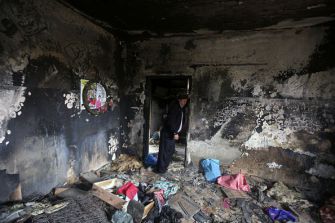
Terrorist Victims: A relative stands inside the burnt-out home of Saad Dawabsha, who was killed alongside his infant and wife when Jewish extremists firebombed their house in the West Bank village of Duma last July. – Getty Images
It also turns out that several of those detained as part of the Duma investigation have U.S. citizenship. That may reflect the disproportionate presence of Americans among settlers overall. According to Sara Yael Hirschhorn, an Oxford University scholar, some 15% of all settlers are Americans, compared with 2% to 3% of all Israeli citizens. The prominence of Americans among those detained echoes the historic leadership roles Americans have played in Israel’s contemporary right-wing radicalism, from Kahane, a native New Yorker, to Ginsburgh, who was born in St. Louis and spent much of his youth in Philadelphia, and Baruch Goldstein, the Brooklyn born-and-raised physician who in 1994 murdered 29 Muslims at prayer at the Cave of the Patriarchs, a site in Hebron holy to Muslims and Jews.
According to Shekhtman, the hilltop youth are frustrated that members of the national religious mainstream, like Bennett, have failed to support them. Sitting in a squat office building in Yitzhar, where he now lives, Shekhtman counted off Jewish figures whose one-time radical acts are now celebrated in the Israeli mainstream. He pointed to the Lehi, a pre-state Zionist group in the 1940s that launched terrorist attacks against British civilian officials and Arab civilians in Mandate Palestine. Today, streets in Israel are named for members of the Lehi. In Shekhtman’s view, Bennett’s support for the Shin Bet’s investigation against Jewish extremism smacks of hypocrisy. “Kids see that something is not clear here,” he said.
In 2013, the Israeli government initiated an outreach program, known as the Hebrew Shepherd, to rein in the hilltop youth. But according to those involved, it has failed to make headway with the most radical youngsters. Avia Azulay, a brawny 36-year-old with a bushy black beard, worked for the program for three months. Sitting inside a makeshift pizza parlor in the Itamar settlement while a pair of teenage boys lounged on a dingy yellow couch outside, he explained that he quit the government program when he came to believe that the Shin Bet was involved. “I said, this is going to be a problem, because if I come to youth at risk and I say I am working for the police, then I lose the trust,” he said. The Education Ministry, which runs the program, turned down a request for comment.
Azulay stakes his credibility with the hilltop youth on the fact that he was an early adopter of the lifestyle. He was born in Yamit, a settlement in Egypt’s Sinai Peninsula that Israel evacuated in 1982. From there his parents went to Kiryat Arba, a settlement of ideologically motivated Israeli Jews near the Palestinian city of Hebron. Azulay left his family for high school in Itamar, but dropped out and made his way to Od Yosef Chai yeshiva. There he met likeminded teens who lived on the fringes.
“We decided we wanted to do something with more meaning,” he said. “We were going to expand the yishuv,” or body of Jewish settlements.
At the age of 15, Azulay moved with his friends to a hill next to Yitzhar. But soon, he said, the Civil Administration, the Israeli military’s administrative arm in the West Bank, ordered them to leave.
Azulay sought advice from Gilad Zahr, a security officer with the Samaria Regional Council. He learned that it was more difficult for Israeli authorities to order the destruction of a facility once it had already been fully built. So he and his friends set about constructing a home inside a tent. Only when the home was finished did they take down the tent, surprising the Civil Administration. Later, Yitzhar paved a road to the outpost. Today, the hilltop settlement, called Lehava, or Flame, is still standing, even as it is considered illegal construction by Israel.
“Our techniques worked,” Azulay said. “The houses are still there today.”
Azulay’s hilltop activities, however, got him into trouble with the Shin Bet. He said that he was passed over for the army — many hilltop youth are considered too dangerous to serve in the Israel Defense Forces — but later convinced a Shin Bet agent to reconsider him. Eventually he became the head of security in Itamar. “I went from a situation in which they didn’t want me to have a gun to where I became a commander in the army, and then here I was, in charge of the guns in Itamar, and I had 150, 160 guns here,” he said.
While Azulay considers the work of settling hilltops heroic, he wants to help the hilltop youth stay out of trouble so that they can join the military and go on to lead productive adult lives. “The hilltop youth say, ‘One should kill all the Arabs.’ And I say I am also in favor. I am in favor of killing the enemies, and if you go to the army you will kill terrorists.”
But Shekhtman believes that Jewish civilian violence has a place in the greater political scheme. Echoing Ginsburgh, who cites the Torah, he said that “Jewish revenge” is a “value,” even though ideally a military should be exacting it instead of Jewish teens.
During Hanukkah, Shekhtman was a guest at a Jewish wedding at which a group of young men danced while waving guns in the air. One thrust a knife through a photograph of Ali Saad Dawabsheh, the infant killed in the Duma fire. Video footage of the wedding was leaked to the press, causing mainstream Israelis to recoil at the radicalism in their midst. Shekhtman said he did not see the man stabbing the photo. But the idea did not scandalize him.
“It doesn’t bother me. I don’t know if the father threw stones or if he didn’t, or if the baby would have thrown stones or wouldn’t have if he lived till the age of 15 or 20. Come on, it’s a picture.”
Shekhtman called the video a “smokescreen” to distract from the torture allegations. He believes that the Duma case and the torture claims are forcing the tension between Israel’s secular democracy and its Jewish character to come to a head. The Shin Bet, he said, is prosecuting not murder, but ideology. When Jews in Israel see the security establishment torturing other Jews, he believes, they will realize that Israel is operating outside a Jewish value system, and be moved to create a truly Jewish state.
“They are saying, ‘These are crazy kids, radicals who want to form a Jewish state and have state government by Torah and Jewish law,” Shekhtman said. But he doesn’t see the mission as crazy at all: “A lot of people want that.”
Among the hardcore settlers, debate is now raging over whether hilltop youth are violent delinquents or young visionaries. For years, radical settlers have moved to the hills beyond the borders of existing settlements to establish new neighborhoods. Though the Israeli government considers these outposts unauthorized, it provides them with electricity, running water and security. (The international community, meanwhile, considers all the exclusively Jewish settlements Israel has established in the territories it conquered in the 1967 Six Day War to be illegal.)
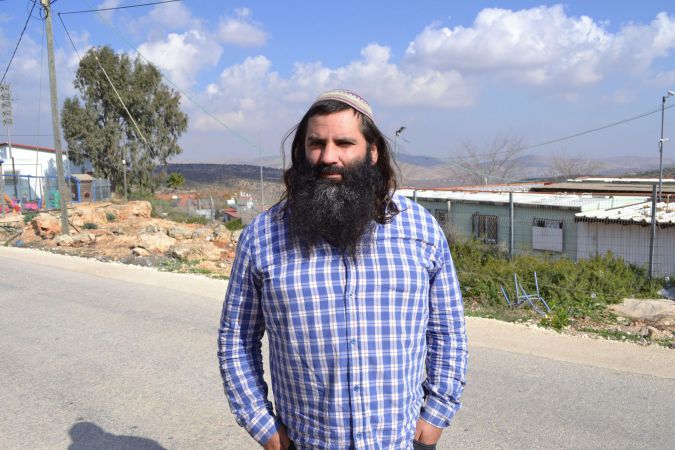
Hilltop Social Worker: Avia Azulay, 36, was an early hilltop youth adherent, but worked more recently for a government program to draw hilltop youth back into mainstream society. Azulay told them they could better fulfill their desire to kill Arabs by serving in the Israeli army and killing terrorists. – Image: Naomi Zeveloff
The hilltop youth live in remote areas, too, but their project is much more anarchic than just constructing unauthorized outposts. They engage in an epic cat-and-mouse game with the IDF and lash out at Palestinians to exact a “price” when the government dismantles an illegal outpost. According to the Duma indictment, the two boys accused of the murders there sought to spark an intra-religious war that would undermine the State of Israel. Part of the Duma investigation has focused on a group called “The Revolt” which seeks to overthrow the state and create a Jewish monarchy in its place.
“There is no doubt that the hilltop youth today are outside the boundaries of normal life. That is the way it is perceived in Israel,” said Tzvi Sukkot, a former member who now lives in a one-story home in Yitzhar with his wife and three children. On the wall in his living room is a large Technicolor canvas painted by his grandfather. It depicts King David, the prophet Elijah and the Messiah as a young child. A stone foundation of the Third Temple is visible in the background. “Some people feel threatened by their lifestyle,” he continued. “And they say that these people live on the fringe of society or that they were thrown out of their homes. From what I know, these young people are the best students in their schools, and they believe in what they are doing.”
Indeed, while some of the hilltop youth come from troubled homes, others represent elite Israeli families. Elisha Odess, who was detained in connection with the Duma attack, is the son of Moshe Odess, the rabbi of Tzofim, a mixed secular-religious settlement in the northern West Bank. Odess has dual American-Israeli citizenship. And Amiram Ben Ulliel, who was indicted in the Duma affair, is the son of Rueven ben Ulliel, a rabbi in a preparatory program for religious army recruits, according to Haaretz.
David Ha’Ivri, a political activist from Tapuach, said that when teens decamp for the hilltops, that should be a “red light” to parents. “Their families have lost that bond and that connection,” he said, noting that his own son nearly missed his opportunity to serve in the IDF after he was arrested during a protest at Tapuach Junction. “[The family connection] stops being relevant in these kids’ lives, and that has led to a very sad result all around.”
Ha’Ivri should know: An American immigrant whose birth name is Jason David Axelrod, he’s seen settler radicalism from both sides of the generational divide, having been arrested for celebrating the 1995 assassination of Prime Minister Yitzhak Rabin, and later serving six months in jail in connection with the desecration of a mosque. The mosque episode occurred 20 years ago, Ha’Ivri said, when he accompanied a group of minors as they tore through an Arab village, vandalizing homes and the house of worship. He was the only adult in the group, and was arrested.
In hindsight, he said that it “wasn’t a smart thing to do. I guess I was in a different place at that time and I grew out of that.”
_____________________________________
Naomi Zeveloff is the Middle East correspondent of the Forward, primarily covering Israel and the Palestinian Territories. zeveloff@forward.com
Join the BDS-BOYCOTT, DIVESTMENT, SANCTIONS campaign to protest the Israeli barbaric siege of Gaza, illegal occupation of the Palestine nation’s territory, the apartheid wall, its inhuman and degrading treatment of the Palestinian people, and the more than 7,000 Palestinian men, women, elderly and children arbitrarily locked up in Israeli prisons.
DON’T BUY PRODUCTS WHOSE BARCODE STARTS WITH 729, which indicates that it is produced in Israel. DO YOUR PART! MAKE A DIFFERENCE!
7 2 9: BOYCOTT FOR JUSTICE!
DISCLAIMER: The statements, views and opinions expressed in pieces republished here are solely those of the authors and do not necessarily represent those of TMS. In accordance with title 17 U.S.C. section 107, this material is distributed without profit to those who have expressed a prior interest in receiving the included information for research and educational purposes. TMS has no affiliation whatsoever with the originator of this article nor is TMS endorsed or sponsored by the originator. “GO TO ORIGINAL” links are provided as a convenience to our readers and allow for verification of authenticity. However, as originating pages are often updated by their originating host sites, the versions posted may not match the versions our readers view when clicking the “GO TO ORIGINAL” links. This site contains copyrighted material the use of which has not always been specifically authorized by the copyright owner. We are making such material available in our efforts to advance understanding of environmental, political, human rights, economic, democracy, scientific, and social justice issues, etc. We believe this constitutes a ‘fair use’ of any such copyrighted material as provided for in section 107 of the US Copyright Law. In accordance with Title 17 U.S.C. Section 107, the material on this site is distributed without profit to those who have expressed a prior interest in receiving the included information for research and educational purposes. For more information go to: http://www.law.cornell.edu/uscode/17/107.shtml. If you wish to use copyrighted material from this site for purposes of your own that go beyond ‘fair use’, you must obtain permission from the copyright owner.
Read more
Click here to go to the current weekly digest or pick another article:
PALESTINE - ISRAEL:
